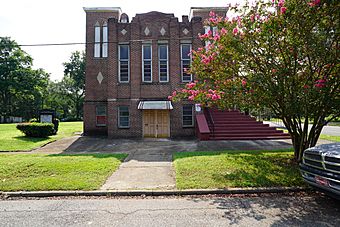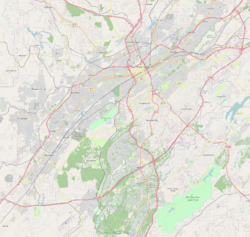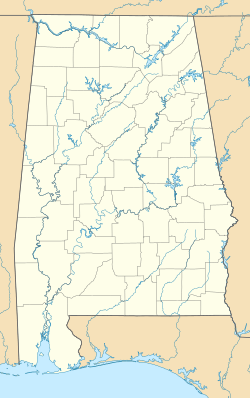St. Luke AME Zion Church facts for kids
Quick facts for kids |
|
|
St. Luke AME Zion Church
|
|
 |
|
| Location | 3937 12th Ave. N Birmingham, Alabama |
|---|---|
| Area | less than one acre |
| Built | 1930 |
| Architectural style | Gothic Revival |
| MPS | Civil Rights Movement in Birmingham, Alabama MPS |
| NRHP reference No. | 05000295 |
| Added to NRHP | April 22, 2005 |
The St. Luke AME Zion Church is a very old and important church located at 3937 12th Ave. North in Birmingham, Alabama. It belongs to the African Methodist Episcopal Zion (AMEZ) group. This church has a special place in history, especially because of its role in the civil rights movement.
Contents
St. Luke AME Zion Church
This church is more than just a building; it's a landmark. It was built in 1930, but the church community itself started much earlier, in 1888. Imagine, that's over 130 years ago! The building has a beautiful style called Gothic Revival.
A Look Back: The Church's History
The St. Luke AME Zion Church community began in 1888. This was a time when many African American churches were forming. They provided a place for worship and also for people to gather and support each other. The current church building was finished in 1930. It has stood strong through many important moments in history.
A Place for Change: The Civil Rights Movement
The St. Luke AME Zion Church played a big part in the civil rights movement. This was a time when people worked hard for equal rights for all, especially African Americans. Churches like St. Luke were often meeting places for activists. They were safe spaces where people could plan and organize peaceful protests.
Sadly, because of its importance, the church was attacked. On January 16, 1962, the church was bombed. Two other churches nearby were also bombed that day. These attacks were meant to scare people. But they often made people even more determined to fight for justice.
A Special Recognition
Because of its important history, especially during the civil rights movement, the St. Luke AME Zion Church was added to the National Register of Historic Places in 2005. This means it's recognized as a special place that needs to be protected for future generations. It reminds us of the brave people who worked for a fairer world.
See also
- St. Luke AME Church - also in Birmingham, also significant in the civil rights movement, and also added to the NRHP in 2005
References




